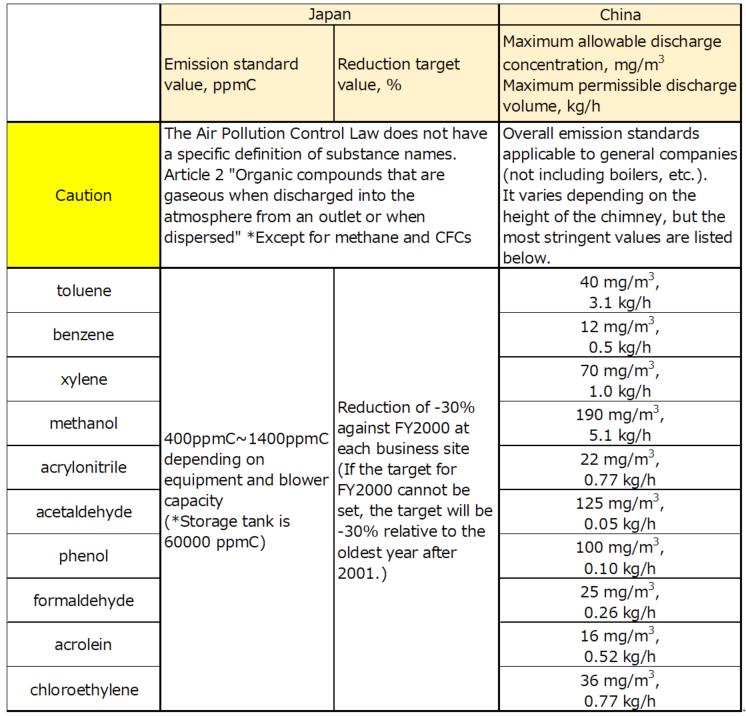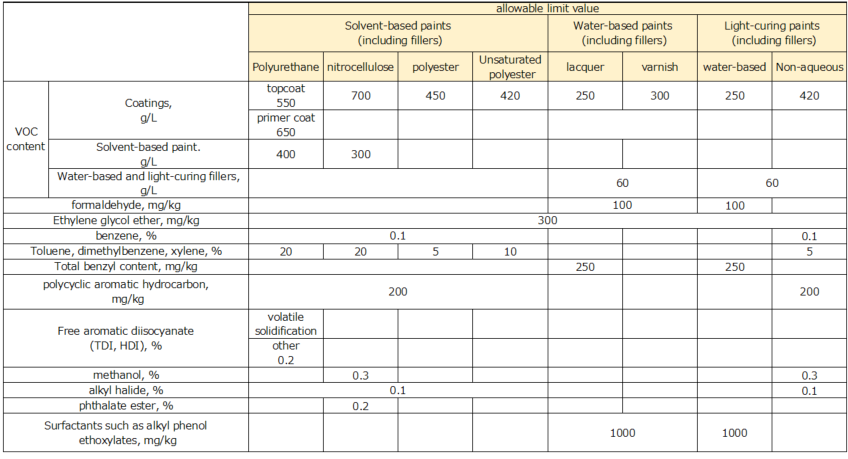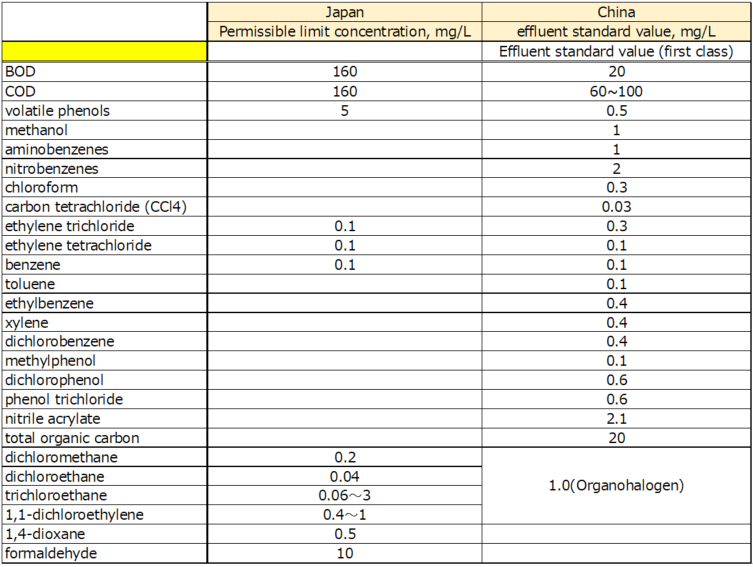Analysis of volatile organic compounds (VOCs)

Introduction
VOCs (Volatile organic compounds) are organic compounds that are volatile even at room temperature and pressure. The history of its regulation is very short compared to other hazardous substances, so researchers may not be familiar with these compounds. This article will introduce the nature of VOCs and domestic and international regulations.
About VOC & PM2.5
First, let's discuss the health hazards of VOCs. In fact, the health hazards of VOCs themselves are not so serious, except for some people who have sick building syndrome. The amount of volatile organic compounds contained in the atmosphere is approximately several to ten ppm, and it is far below the human exposure limits for each of the gases that make up VOCs. However, it is a serious problem because the very small particles generated from VOCs have an adverse effect on the human body.
VOCs are oxidized by hydroxyl radicals (OH・) in the air, and then neutralized by basic components (such as ammonia) in the air. All of this process is a gaseous reaction, producing extremely small particles. These are a type of PM2.5. Incidentally, the size of PM2.5 is said to be 2.5 μm or less.
PM2.5 can slip through the human body's defense mechanisms and enter deep into the alveoli. One of the most famous large-scale epidemiological studies showing a strong correlation between PM2.5 and mortality is the US Six Cities Study by Dockery (Harvard University). The results show that the mortality threshold for the environmental risk of PM2.5 is around 15 μg/m3, and then this value has become the target for environmental standards. This led to the tightening of regulations on PM2.5-causing substances in many countries.*1*2*3
Substances such as NOx from automobile exhaust and SOx from power plants and natural sources are also causes of PM2.5. However, these chemicals have already been regulated and countered to the limit, and further reduction is tough.
Next, let's look at the actual situation of VOCs emissions and regulations in Japan.
Domestic survey of volatile organic compounds in Japan
Domestic emissions of VOCs in Japan
About 40% of the major sources of VOCs emissions in Japan are paints, 20% are fuel (evaporation), and 10% are printing and adhesives.*4 Many VOCs are emitted during the painting of automobile body parts and the drying process of printing. Surprisingly, most of these emitted VOCs are from small and medium enterprises.*5
One of the reasons is that small and medium enterprises are regulated by the "voluntary initiatives" described below. In contrast, large companies are installing combustion-type VOCs treatment equipment as a regulatory measure. The high cost of running that equipment as a fuel aid (more than 10 million yen/year) makes it difficult for small and medium enterprises to implement. However, the total amount of VOCs emissions in Japan has been decreasing year by year.
Domestic regulation of volatile organic compounds in Japan
There are two types of VOCs regulations in Japan.
The first is the emission standard regulation, which is set according to the scale of business (blower standard) and type of facility. This regulation is based on the revision of the Air Pollution Control Law in 2004 and the revision of the Ministerial Ordinance and Cabinet Order in 2005. This is a very clear standard that is easy to understand, for example, "Drying facilities with a blowing capacity of more than 3000 m3/h must not exceed 600 ppmC (carbon equivalent concentration). However, there is no total emission standard in this regulation.
The second is "voluntary initiatives" by businesses. This regulation is older than the revision of the Air Pollution Control Law, and it is based on targets such as "reducing the total VOC emissions of all businesses by 30% by 2010 compared to 2000". This system has continued after 2010, and has decreased to 54% in 2018.*6
VOC regulations for water supply, environment, and sick building in Japan
In general, VOCs regulations refer to air pollution control regulations aimed at countermeasures against PM2.5, as described above, but there are also other VOCs regulations aimed at countermeasures against sick building syndrome, etc.
For example, the 2003 amendments to the Building Standards Law (Law 28-2, Enforcement Order Article 20) set limits on the area where formaldehyde (paint and preservatives) can be used in building materials and banned the use of chlorpyrifos (a termite exterminator).
Compared to the atmosphere, the air indoors is more stuffy and therefore more prone to high concentrations of VOCs, which can cause health problems such as sick building syndrome and allergies. In addition to regulations on building materials, the government also provides non-regulatory standard guidelines (e.g. formaldehyde 100 μg/m3) such as indoor concentration standards and standards for school environmental hygiene.*7
In addition, VOCs are also regulated by the Water Pollution Control Law. To be precise, it does not target only VOCs, like the Air Pollution Control Law and the Building Standards Law, but VOCs are included as part of the regulated substances in the Water Pollution Control Law (Article 2, Paragraph 4). Specific VOCs include formaldehyde, xylene, ethyl acetate, styrene, chloroform, (hexamethylenetetramine), and many others. Effluent standards have been established for each compound, for example, formaldehyde is 10 mg/L or less. However, please note that the effluent standard here is different from the water quality standard item for water supply (0.08 mg/L or less). This means that each business can discharge formaldehyde as long as the wastewater is less than 10 mg/L, but water treatment plants need to treat the water they take in to less than 0.08 mg/L.
The overseas surveys of volatile organic compounds
The latest trend of China's VOCs regulations and official laws
The concentration of PM2.5 in urban areas in China has decreased by 50% in the last five years, and it is on a rapid downward trend. However, it is still not uncommon for PM2.5 concentrations to exceed 100 μg/m3 on some days, and there is great concern about health hazards. China's PM2.5 situation is largely due to its continental climate, which makes rainfall difficult, and its unique consumer heating situation. And VOCs, one of the causative substances, have also been regulated.*8
Chinese authorities have established a unique "air quality index (AQI)" and have promulgated a national mandatory standard (GB standard) as a means to achieve it. The Chinese authorities have two sets of guidelines for exhaust gas regulations: (1) emission regulations for equipment exhaust gas, (2) regulations for paints and solvents themselves.
The (1) is based on the Air Pollution Control Law, which was revised in 2000. The regulations are based on "industry-specific and type-specific emission standards" for boilers, power plants, coke ovens, etc. This article will summarize the Comprehensive Emission Standards for Air Pollutants, which regulate general printing factories and other facilities (Table 1). This emission standard regulates not only VOCs but also a wide range of other substances such as metals, SOx, NOx, and suspended particulate matter. The standard values are much stricter than the Japanese standards.*9 The standard shown in Table 1 is the "National Standard GB", and in fact many provinces and cities have even stricter regulations for industrial zones.)
Table 1 Comparison of emission standard regulations between Japan and China (national standard GB)

Regarding (2), gradual regulations and taxes have been applied to wooden paints, building materials, vehicles, etc. since the 2010s. In addition, the GB standard has been significantly strengthened with the aim of further improving the atmospheric environment. For example, the seven GB*10 standards promulgated in 2020 added regulations for inks and cleaning agents themselves, and specified the VOC content of raw materials that can be used in each industry and process. GB18581-2020, which is one of the GB standards, has detailed regulations depending on the type and application of the paint used (Table 2).
Table 2 Tolerance limits for each substance, including VOCs, specified by the type of paint

As a result of these efforts, the air quality has been improved, and in 2017, a reduction of 34% was achieved compared to the initial PM2.5 reduction target of 10-25% for 2013.*11
Incidentally, the measurement method is specified in the measurement method standard; GB/T. For example, GB18581-2020 specifies that one of the methods for determining the total VOC content of a paint is to follow GB/T23985-200 "Differential method for determining the volatile organic compound (VOC) content of paints and varnishes". The content is almost the same as ISO 11890-1, 2007. In this content, after heating 1 g of sample moisture at 105°C for 1 hour, the remaining amount is used as the non-volatile component, and the total VOC amount is calculated from the difference. As for the measurement method for exhaust gas regulations, both Japan and China use GC/FID for identification and quantification after collection in Tedlar Bags, so there is no difference in essential values between the two (Ministry of the Environment Notification No. 61).
The effluent standards of Japan and China are as follows (Table 3). There are two types of standards: first-class standards, which are regulated by each factory, and second-class standards, which are regulated by each business site. This section summarizes the first-class standards. As can be seen from the Table 3, the regulatory scope of the Chinese authorities generally covers a wider range of substances, and their standard values are also more stringent.
Table 3 The effluent standards of Japan and China(first-class standards)

The latest trend of VOC regulations in ASEAN, and official laws
Each country in ASEAN has different environmental regulations, In the case of ASEAN, it is a regulation regarding SOx and NOx. The concentration of PM2.5 in the region does not meet the WHO standard (<10~15 μg/m3), but is about 30~50 μg/m3.*11
For this reason, monitoring of PM2.5 began in mid-2010. Recently, PM2.5 is finally becoming an environmental standard value. However, there are only a few areas where VOC emission standards have been set for equipment exhaust gas as a countermeasure for PM2.5, and raw material regulations have not progressed. However, as mentioned above, even though the environmental standard for PM2.5 is looser than the WHO standard, the standard values for each country are being set, so there may be a move toward regulating VOC emissions in the future.*12
PM2.5 monitoring started in the middle of 2010, and PM2.5 is becoming an environmental standard value, but VOC emission standards for equipment exhaust gas are set in some areas, and raw material regulations are not advanced. Standard values for each country are being set, and VOC emission regulations may be promoted.*13
Referencrs
- Dockery, D.W., Pope, C.A., 3rd, Xu, X., Spengler, J.D., Ware, J.H., Fay, M.E., Ferris, B.G., Jr.& Speizer, F.E. : New England Journal of Medicine, 329, 1753-1759 (1993). DOI:10.1056/NEJM199312093292401
- Krewski, D., Burnett, R.T., Goldberg, M., Hoover, K., Siemiatycki, J., Abrahamowicz, M.,Villeneuve, P.J. & White, W. : Inhalation Toxicology, 17, 343-353 (2005). DOI: 10.1080/08958370590929439
- Krewski, D., Burnett, R.T., Goldberg, M., Hoover, K., Siemiatycki, J., Abrahamowicz, M. &White, W.: Inhalation Toxicology, 17, 335-342 (2005). DOI:10.1080/08958370590929402
- Ministry of the Environment: Report on the Survey on the Preparation of Volatile Organic Compounds (VOC) Emission Inventories for Fiscal 2018 (2019).
- katsuaki, T.: Presentation material for the Tokyo Metropolitan Government's seminar on the spread of VOC countermeasures, Examples and advantages of VOC reduction measures (2008).
- Mitsubishi Research Institute, Inc.: Overseas situation grasping work on photochemical oxidant measures, p.141 (2021).
- Ministry of Education, Culture, Sports, Science and Technology: Ministry of Education, Culture, Sports, Science and Technology Bulletin No. 60, School Environmental Hygiene Standards, School Environmental Hygiene Standards for the Environment of Classroom 1, etc. (2009).
- Furong, D.: Osaka University Forum BOOKLET, Toward the Construction of an East Asian "Life and Health Sphere", 35-37 (2015).
- Global Environmental Forum for Humanity: "2003 Survey on Environmental Consideration Trends in Overseas Activities of Japanese Companies" Report, 1 (2003).
- State Administration of Market Supervision and Administration: Announcement of Chinese National Standards No. 2 of 2020, Announcement on the Approval and Release of 7 National Standards such as "Limit of Hazardous Substances in Wooden Paint (2020).
- Mitsubishi Research Institute, Inc.: Trends in Environmental Regulations in the Field of Air Quality in Major Countries in Fiscal Year 2008, 159-203 (2018).
- National Institute of Technology and Evaluation (NITE): FY 2008 Survey Report on Chemical Substance Management Systems in Asian Countries, 39-63(2016).
- Ministry of Environment: Current Status and Measures of Environmental Pollution in Vietnam, Needs for Environmental Measures Technology, 1 (2016).




